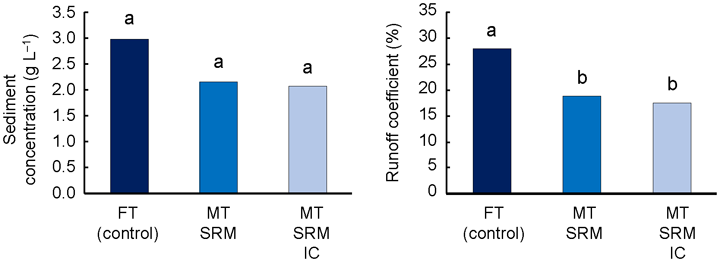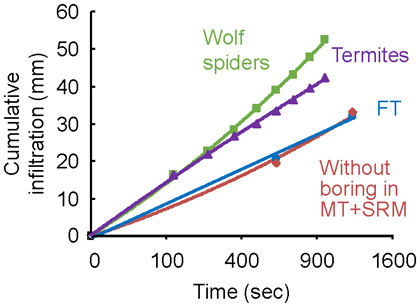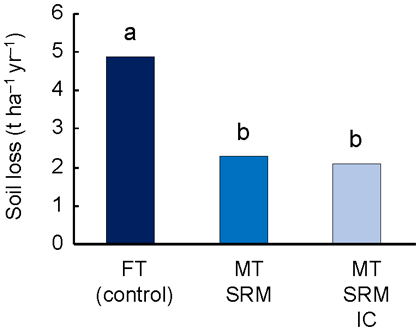Conservation agriculture without intercropping component can adequately control water erosion in the Sudan Savanna, West Africa
Description
In the Sudan Savanna (annual rainfall: 600–900 mm), soil erosion caused by water is severe and a major threat to sustainable agriculture because it depletes soil nutrient and productivity. Conservation agriculture (CA) recommended by the FAO consists of three components: minimum soil disturbance, soil cover, and crop rotation/association. CA was expected to become an effective countermeasure against water erosion in the Sudan Savanna but it has not been adopted by local smallholder farmers because the three-component CA package is considered a heavy burden by farmers who have meager cash and labor resources. Therefore, we examined whether legume intercropping as a crop rotation/association component is vitally necessary for preventing water erosion in the Sudan Savanna.
Three-year field experiments were conducted in runoff plots at the Institute of the Environment and Agricultural Research (INERA) Saria Station, Burkina Faso, and the following findings were obtained:
- Reduced soil loss in both three-component CA package and CA without intercropping was mainly attributed to the reduction in the runoff coefficient (not in the sediment concentration) (Fig. 1).
- CA without intercropping, i.e., with minimum tillage (MT) and sorghum residue mulching (SRM), effectively reduced the annual soil loss by 54% mainly due to the improvement of soil permeability by the boring of termites and wolf spiders found under the sorghum stover mulch (Figs. 2 and 3).
- When combined with MT and SRM, intercropping had no effect on soil erosion control (Fig. 3), indicating that the third component of CA, namely legume intercropping, is not always necessary; rather, the two remaining components—minimum soil disturbance and soil cover—are sufficient for controlling water erosion in the Sudan Savanna.
These findings lighten the burden of adopting CA, and thus facilitates its future promotion to the smallholder farmers in the Sudan Savanna.
Figure, table
-
Fig. 1. Sediment concentration (left) and runoff coefficient (right) for each treatment.
FT: full tillage, MT: minimum tillage, SRM: sorghum residue mulching, IC: intercropping
Mean values with different letters are significantly different between treatments (P < 0.05). -
Fig. 2. Permeability of soils in full tillage plot (without animal holes) and soils with/without holes made by termites and wolf spiders in minimum tillage + sorghum residue mulching plot.
-
Fig. 3. Soil loss for each treatment.
Mean values with different letters are significantly different between treatments (P < 0.05).
- Affiliation
-
Japan International Research Center for Agricultural Sciences Crop, Livestock and Environment Division
- Classification
-
技術
- Research project
- Program name
- Term of research
-
FY2018(FY2011-FY2015)
- Responsible researcher
-
Ikazaki Kenta ( Crop, Livestock and Environment Division )
ORCID ID0000-0001-5460-8570KAKEN Researcher No.: 70582021Nagumo Fujio ( Crop, Livestock and Environment Division )
KAKEN Researcher No.: 20399372Simporé Saïdou ( Environmental Institute for Agricultural Research, Burkina Faso )
Barro Albert ( Environmental Institute for Agricultural Research, Burkina Faso )
- ほか
- Publication, etc.
-
https://doi.org/10.1080/00380768.2017.1422393
Ikazaki K et al. (2018) SSPN, 64: 230-237
- Japanese PDF
-
A4262.4 KB
A3202.3 KB
- English PDF
-
A4100.21 KB
A3175.17 KB
- Poster PDF
-
2018_A05_poster.pdf285.04 KB



